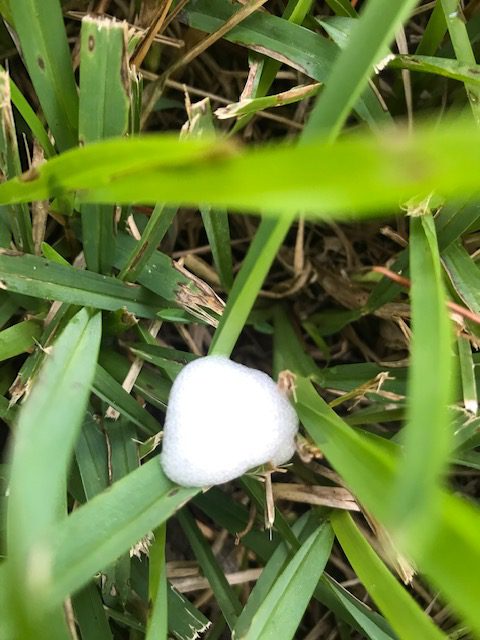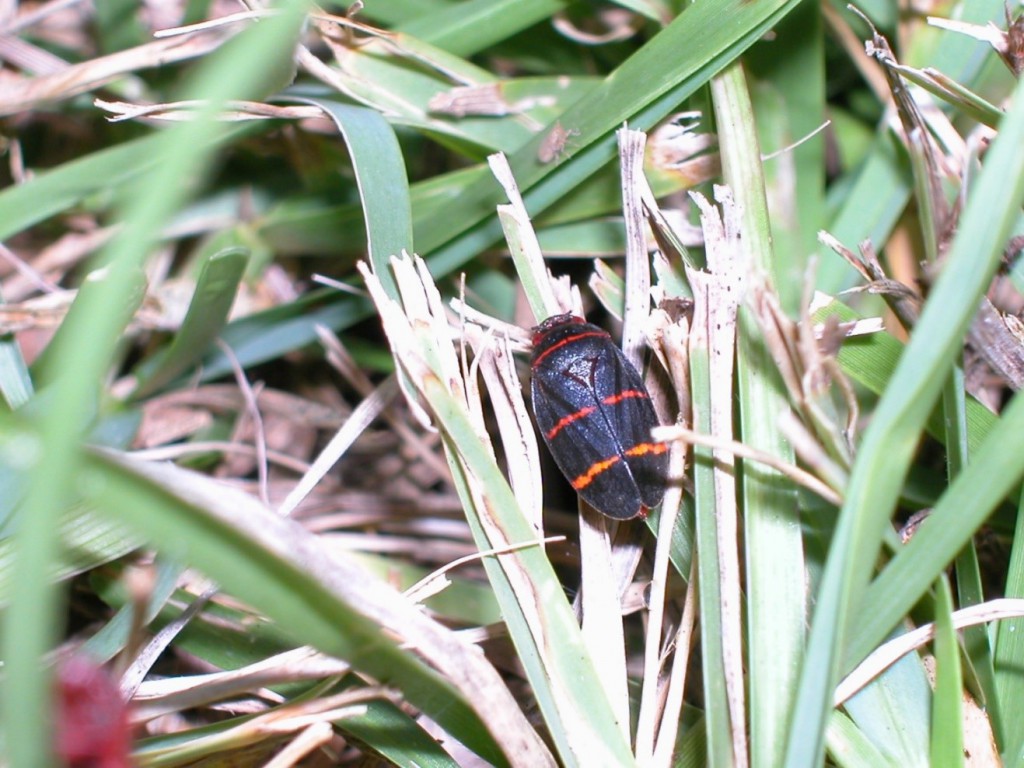Over the Labor Day weekend, I began the process of ridding my lawn of purple and yellow nutsedge as well as kyllinga. I was in the backyard hand-pulling the yellow nutsedge while carefully trying to avoid any missed dog bombs when I came across this beautiful spittle mass. If I had one, this would have been the perfect time to say hold my beer while I take a picture of this. So, my first thought wasn’t that I had spittlebugs, but rather this will make a good blog post.

In recent years I have gotten phone calls from clients who while cutting the grass, noticed these flying bugs with orange stripes. Two days ago, a resident came into my office with a bag full of insects which she had collected from the neighbor’s pool. Yes, it contained several of these black bugs with orange stripes across their wings.
The two-lined spittlebug, Prosapia bicincta, is an important insect pest of turfgrass and very active in early summer. There are two generations per year. Although it attacks all turfgrass species, centipedegrass is most susceptible to an infestation. They don’t just feed on grass either. Ornamentals, especially hollies, and some perennials are also subject to attack from spittlebugs.
The nymphs attach to the leaf blade and immediately start to make this foam-like froth, white spittle mass to protect them from predators as they are feeding. The adults are about ¼- to ½-in long, smoky brown to black in color, broadly oval, convex with prominent eyes. They have two bright orange stripes across their wings. Because the adults seem to jump around they are sometimes called froghoppers.

The damage to the lawn can be confused with water deficiency symptoms. At first the grass blades may turn yellow and then brown or purple. Eventfully, there will be a complete wilting of the stems and leaves, ultimately causing the death of the grass.
Management options include reducing thatch or insecticide applications. Contact your local county Extension office for pesticide recommendations.
Sources: Landscape Pest Management, UGA Extension; Two-lined Spittlebug: Biology and Management in Turfgrass